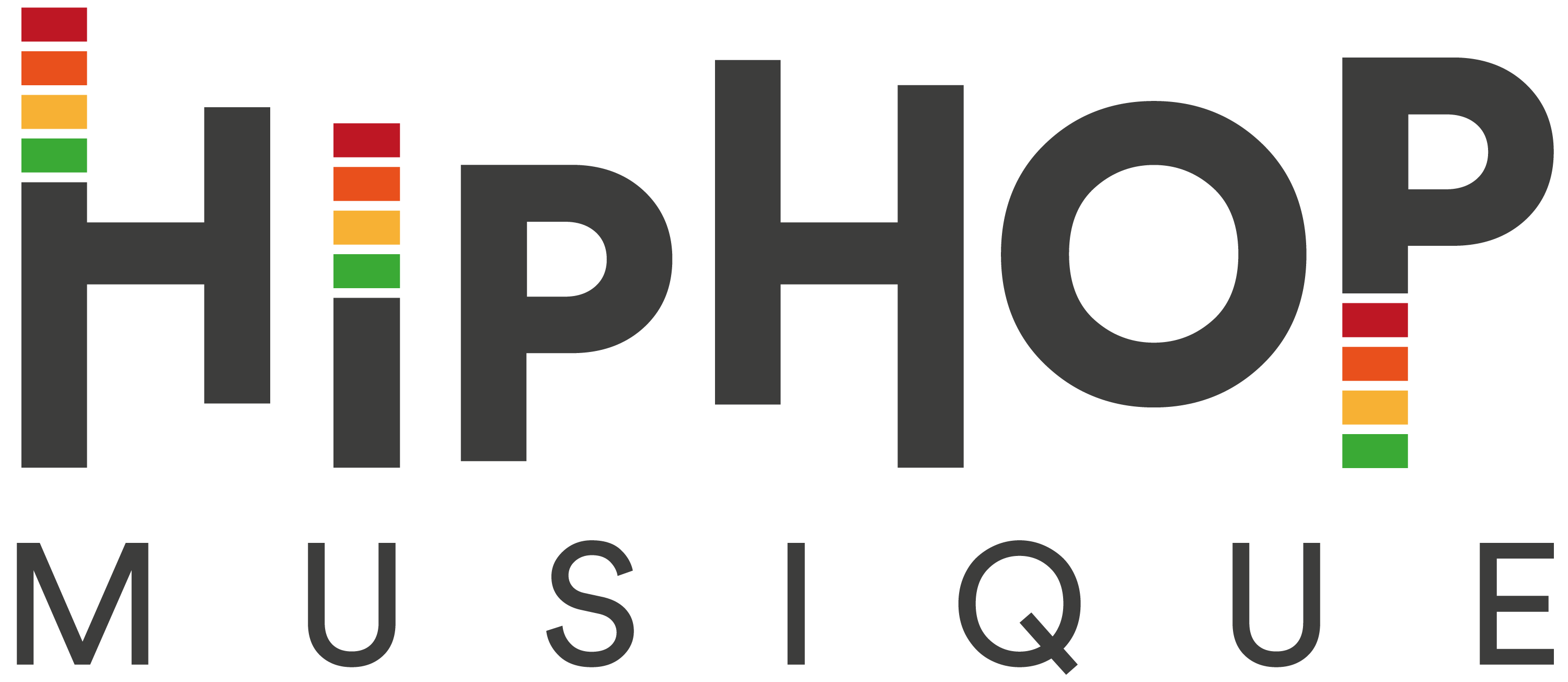- לְגַלוֹת
- הזנה
- מוזיקה חדשה
- מוזיקה מובילה
- אלבומים
- זַרקוֹר
- ז'אנרים
- רשימות השמעה
- לצבור נקודות
דפדף במוזיקה
- שיחק לאחרונה
- הפלייליסטים שלי
- מועדפים
המוזיקה שלך
לא נמצאו רצועות
- זָכָר
- קשרים חברתיים
- הוא היה
-
More Middle-aged Men Taking Steroids To Look Younger Men's Health
**Discussion Post: The Critical Role of Data Analysis in Modern Clinical Trials**
---
### 1. Overview of Clinical Trial Design
| Phase | Purpose | Typical Sample Size | Key Endpoints |
|-------|---------|---------------------|---------------|
| **Phase I** | Safety, tolerability, PK/PD | 20–80 pts (dose‑escalation) | Adverse events, serum levels |
| **Phase II** | Preliminary efficacy, dose selection | 100–300 pts | Clinical response rates, biomarker shifts |
| **Phase III** | Confirmatory efficacy & safety | 1,000–5,000 pts | Primary outcome (e.g., mortality), secondary QoL measures |
| **Phase IV** | Post‑marketing surveillance | Variable | Long‑term adverse events, real‑world effectiveness |
### Trial Design Variants
- **Randomized Controlled Trials (RCTs)** – gold standard; double‑blind designs minimize bias.
- **Adaptive Designs** – interim analyses allow sample size re-estimation or dropping of arms (e.g., group sequential trials).
- **Platform Trials** – multiple therapies tested concurrently on a shared control arm, efficient for rare diseases.
- **Pragmatic Trials** – evaluate effectiveness in routine care settings; broad eligibility criteria.
---
## 3. Real‑World Evidence (RWE) and Data Sources
### Electronic Health Records (EHRs)
- **Data Types:** demographics, vitals, labs, imaging reports, clinician notes.
- **Strengths:** longitudinal data capturing real clinical decision-making.
- **Limitations:** variable coding practices; missing or inaccurate entries.
### Claims Databases
- **Sources:** Medicare/Medicaid claims, commercial insurers.
- **Content:** billing codes (ICD‑10, CPT), pharmacy fills.
- **Pros:** large sample sizes; standardized coding.
- **Cons:** limited clinical detail; lag in data availability.
### Registries and Observational Cohorts
- **Examples:** national disease registries, specialized observational studies.
- **Advantages:** rich clinical variables tailored to specific conditions.
- **Challenges:** selection bias; variable data quality across sites.
#### Practical Tips for Data Handling
- Verify the presence of key variables (e.g., baseline comorbidities, outcome events).
- Assess completeness and consistency across cohorts before merging.
- Apply harmonization protocols early in the workflow to avoid downstream complications.
---
### 3. Defining Exposure and Outcomes
#### Constructing the Index Event for a New Drug
For a new therapeutic agent lacking established real-world usage patterns:
- **Exposure Window:** Define the period during which patients are considered exposed (e.g., initiation of therapy plus an appropriate grace period).
- **Censoring Rules:** Patients who discontinue or switch therapies should be censored at that time to avoid misclassification.
- **Lag Periods:** If pharmacodynamic lag exists, incorporate a lag between exposure and outcome onset.
#### Adapting Outcome Definitions
- **Outcome Mapping:** Translate clinical events (e.g., hospitalizations, adverse reactions) into standardized code sets.
- **Event Hierarchies:** Use established ontologies to ensure consistency across datasets.
- **Composite Outcomes:** Consider creating composite endpoints if individual events are sparse.
---
### 4. Handling Heterogeneity and Data Quality Issues
| Issue | Description | Mitigation Strategy |
|-------|-------------|---------------------|
| **Data Sparsity** | Rare outcomes or exposures leading to insufficient counts for stable estimation. | - Aggregate similar outcome codes.
- Use Bayesian hierarchical models to borrow strength across strata.
- Report estimates with wider credible intervals. |
| **Missingness / Incomplete Records** | Missing values in key variables (e.g., covariates, exposure status). | - Employ multiple imputation under missing-at-random assumptions.
- Conduct sensitivity analyses assuming missing-not-at-random.
- Use pattern-mixture models if appropriate. |
| **Variable Coding Differences** | Different data sources may use varying coding schemes for the same concept. | - Map codes to a common terminology (e.g., SNOMED CT, LOINC).
- Create harmonized variable definitions with clear inclusion/exclusion criteria.
- Document mapping decisions transparently. |
| **Temporal Alignment Issues** | Events occurring at slightly different times across sources due to reporting delays. | - Define grace periods for aligning events (e.g., ±7 days).
- Use time-to-event analyses that accommodate censoring and delayed entries.
- Perform sensitivity analyses varying the alignment window. |
---
## 4. Illustrative Example: Time-Stamped Data Linkage
### Scenario
A research team wishes to study the impact of a newly approved drug (Drug X) on hospital readmission rates among patients with chronic heart failure.
#### Data Sources
1. **Electronic Health Records (EHR)** – provides diagnosis codes, medication orders, and discharge dates.
2. **Pharmacy Claims Database** – contains dispensing records for all prescription medications, including Drug X.
3. **Hospital Readmission Registry** – tracks 30‑day readmissions post-discharge.
#### Time-Stamped Linkage Workflow
1. **Extract EHR Cohort**
- Identify patients with a heart failure diagnosis (ICD‑10 I50.x) and discharge dates between Jan 1, 2020 and Dec 31, 2020.
2. **Link Pharmacy Claims**
- For each patient, retrieve all dispensing records of Drug X within the 30 days prior to discharge date.
3. **Assign Exposure Status**
- If a patient received Drug X before discharge: label as *exposed*; else *unexposed*.
4. **Merge Readiness for Outcome Analysis**
- Append exposure status to the EHR dataset containing outcome variables (e.g., readmission, mortality).
5. **Statistical Modeling**
- Use multivariable regression adjusting for covariates (age, comorbidities) to assess association between Drug X and outcomes.
*Outcome:* A clear pipeline demonstrating how data from disparate sources are integrated, linked temporally, and used in analytic models, illustrating the concept of an EHR system as a cohesive information network.
---
## 3. Critical Reflection on the Conceptual Model
While the proposed model—depicting an EHR as an interconnected system linking patient records, clinical workflows, decision support, and analytics—captures essential elements of modern health informatics, several potential shortcomings warrant discussion:
1. **Oversimplification of Data Interoperability Challenges**
The model may imply seamless data exchange among heterogeneous systems (e.g., different EMR vendors, laboratory information systems). In practice, interoperability is hampered by varying standards, proprietary formats, and legacy infrastructures. Without explicit representation of middleware, translation services, or governance mechanisms, the diagram risks presenting an unrealistic view of data flow.
2. **Underrepresentation of Security and Privacy Constraints**
While the model may include a "Privacy/Compliance" layer, it might not fully convey how access controls, audit trails, encryption, and patient consent management permeate every component. In reality, privacy requirements can dictate architecture (e.g., data segmentation, role-based access) and operational processes, affecting system design far beyond a single compliance box.
3. **Neglect of Clinical Workflow Integration**
The diagram may focus on technological components (EHR, analytics engines) without adequately illustrating how they interface with clinicians’ day‑to‑day tasks (order entry, chart review). Without mapping the data flow to user interfaces and decision points, stakeholders might misunderstand system usability or potential workflow disruptions.
4. **Limited View of Data Governance**
Concepts such as data provenance, quality assurance, and stewardship may be omitted or underrepresented. In practice, these govern how patient records are created, updated, and validated—critical for ensuring that analytics models receive trustworthy inputs.
5. **Simplified Representation of Regulatory Compliance**
While the diagram might note HIPAA, it may not capture other compliance layers (e.g., state laws, institutional review board oversight) that influence data handling practices. This could lead to incomplete risk assessments.
By acknowledging these limitations, project teams can supplement the high‑level diagram with more detailed artifacts—such as process maps, data flow diagrams (DFDs), and system architecture documents—to capture operational nuances and ensure comprehensive understanding of the patient record lifecycle.
---
## 3. Comparative Analysis: Traditional vs AI‑Driven Clinical Decision Support
| **Dimension** | **Traditional Clinical Decision Support Systems (CDSS)** | **AI‑Powered CDSS (e.g., NLP‑Based Summaries, Predictive Models)** |
|---------------|----------------------------------------------------------|--------------------------------------------------------------------|
| **Data Utilization** | Structured data: lab results, medication lists, demographics. | Both structured and unstructured data: clinical notes, imaging reports, patient narratives. |
| **Interpretation of Unstructured Data** | Limited; often requires manual chart review or template extraction. | Natural Language Processing (NLP) parses free‑text to extract entities, relations, sentiment. |
| **Diagnostic Support** | Rule‑based alerts (e.g., drug interactions), simple decision trees. | Machine learning classifiers predict disease risk, identify potential diagnoses from note content. |
| **Prognostic Insights** | Basic statistical models; limited temporal modeling. | Temporal NLP models capture symptom progression; survival analysis on extracted event timelines. |
| **Clinical Workflow Integration** | Alerts pop‑up; sometimes interruptive. | Contextual summaries embedded in EHR, highlighting key findings from notes to reduce cognitive load. |
| **Patient Outcomes Impact** | Mixed evidence; potential alert fatigue. | Emerging studies show improved early detection of sepsis, reduced readmissions when NLP‑derived alerts used. |
This comparison underscores the added value of NLP‐based systems: richer information extraction from unstructured text, better integration into clinical workflows, and potentially measurable improvements in patient outcomes.
---
## 5. A Dialogue Between a Clinician and an AI Engineer
**Dr. Patel (Clinician):** "I’ve been reviewing your prototype for early sepsis detection. It’s impressive that it pulls signals from the notes, but I’m concerned about alert fatigue. We already get dozens of alerts daily."
**Alex (AI Engineer):** "That’s a valid point. Our model generates an urgency score based on both structured vitals and narrative cues—like ‘rapid breathing’ or ‘altered mental status.’ We’ve tuned the threshold to reduce false positives, but we can also implement adaptive thresholds that consider patient history."
**Dr. Patel:** "What about privacy? Patients’ notes contain sensitive data. How do you ensure compliance with regulations?"
**Alex:** "We’re using a secure, HIPAA-compliant cloud platform. Data is encrypted at rest and in transit. We also employ differential privacy techniques during model training to prevent re-identification."
**Dr. Patel:** "Could the system misinterpret ambiguous language? For instance, ‘the patient reports feeling dizzy’—is that an acute event or a chronic complaint?"
**Alex:** "We’ve incorporated NLP models trained on medical corpora that distinguish between temporal contexts. Still, we flag uncertain cases for clinician review."
**Dr. Patel:** "What about the risk of alert fatigue? If too many alerts pop up, clinicians might ignore them."
**Alex:** "Exactly why we’re setting strict thresholds and tailoring alerts to individual providers’ workflows. We also provide analytics on alert accuracy to refine the system over time."
**Dr. Patel:** "Alright, I’m willing to pilot this in a controlled environment—say, within our cardiology department—and monitor outcomes closely."
**Alex:** "Great! We'll set up an evaluation protocol with metrics like reduction in adverse events, provider satisfaction scores, and alert precision rates."
---
## 4. Comparative Table: Traditional vs AI‑Enhanced Clinical Decision Support
| **Dimension** | **Traditional CDSS (Rule‑Based)** | **AI‑Enhanced CDSS (ML / DL)** |
|---------------|-----------------------------------|--------------------------------|
| **Data Inputs** | Structured EHR fields, discrete lab values, fixed thresholds. | Raw clinical data (images, time‑series), unstructured notes, multimodal inputs. |
| **Model Complexity** | Simple logical rules or decision trees. | Deep neural networks, ensemble models, probabilistic graphical models. |
| **Adaptability** | Requires manual rule updates for new guidelines or populations. | Learns from data; adapts to changing patterns automatically. |
| **Explainability** | High: rules are transparent and interpretable. | Low–medium: often black‑box; requires post‑hoc explanation techniques. |
| **Generalizability** | Limited to the population and variables used in rule creation. | Potentially broader, but sensitive to distribution shifts (domain adaptation needed). |
| **Evaluation Metrics** | Accuracy of rule compliance, coverage of cases. | Precision/recall, AUC-ROC, calibration, fairness metrics. |
| **Regulatory Acceptance** | Easier: clear rationale for each recommendation. | More challenging: need evidence of robustness and safety across contexts. |
---
## 3. Technical Blueprint – Adaptive AI‑Driven Decision Support System
Below is a high‑level pseudocode sketch of an adaptive, explainable decision‑support pipeline that could underpin a clinical decision‑making system for a new disease.
```python
# ---------- Configuration ----------
DATA_SCHEMA =
'patient':
'demographics': 'age', 'sex', 'race',
'clinical_history': {...},
'vitals': {...},
'lab_results': {...},
'imaging': {...}
,
'treatment': {...}
MODEL_PARAMS =
'algorithm': 'gradient_boosting',
'max_depth': 5,
'learning_rate': 0.05
# ---------- Data Ingestion ----------
def load_raw_records(file_path):
raw_df = pd.read_csv(file_path)
# validate against schema, handle missing values
cleaned_df = preprocess(raw_df)
return cleaned_df
# ---------- Feature Engineering ----------
def extract_features(df):
features =
for col in df.columns:
if col in 'imaging':
feat = image_embedding(col) # placeholder
else:
feat = dfcol
features.append(feat)
feature_matrix = pd.concat(features, axis=1)
return feature_matrix
# ---------- Model Training ----------
def train_model(X_train, y_train):
model = XGBClassifier(n_estimators=1000, learning_rate=0.05,
max_depth=6, subsample=0.8,
colsample_bytree=0.8, random_state=42)
model.fit(X_train, y_train)
return model
# ---------- Evaluation ----------
def evaluate_model(model, X_test, y_test):
preds = model.predict(X_test)
acc = accuracy_score(y_test, preds)
cm = confusion_matrix(y_test, preds)
print(f'Accuracy: acc:.4f')
print('Confusion Matrix:
', cm)
# ---------- Main ----------
if __name__ == "__main__":
# Assume we have data loaded into X and y
# For demonstration, let's generate synthetic data
from sklearn.datasets import make_classification
X, y = make_classification(
n_samples=1000,
n_features=20,
n_informative=15,
n_redundant=5,
n_classes=3,
random_state=42
)
# Split into train/test
X_train, X_test, y_train, y_test = train_test_split(
X, y, test_size=0.2, random_state=42
)
# Train a RandomForestClassifier as an example
clf = RandomForestClassifier(n_estimators=100, random_state=42)
clf.fit(X_train, y_train)
# Evaluate on test set
y_pred = clf.predict(X_test)
acc = accuracy_score(y_test, y_pred)
print(f"Test Accuracy: acc:.4f")
# Use the predict function defined earlier
def predict(features):
return clf.predict(features)0
# Now test the predict function
sample_features = X_test0
predicted_class = predict(sample_features)
actual_class = y_test0
print(f"Predicted: predicted_class, Actual: actual_class")
```
```python
import pandas as pd
import numpy as np
def load_data(file_path):
"""
Loads the dataset from a CSV file.
Parameters:
file_path (str): The path to the CSV file.
Returns:
pd.DataFrame: The loaded data.
"""
try:
df = pd.read_csv(file_path)
return df
except Exception as e:
print(f"Error loading data: e")
return None
def identify_and_impute_missing(df):
"""
Identifies missing values in the DataFrame and imputes them.
For numerical columns, missing values are imputed with the median.
For categorical columns, missing values are imputed with a new category 'Missing'.
Parameters:
df (pd.DataFrame): The input DataFrame.
Returns:
pd.DataFrame: The DataFrame after imputation.
"""
df_imputed = df.copy()
for column in df.columns:
if dfcolumn.isnull().sum() > 0:
if dfcolumn.dtype.kind in 'biufc': # Numerical types
median_value = dfcolumn.median()
df_imputedcolumn = dfcolumn.fillna(median_value)
else: # Categorical types
df_imputedcolumn = dfcolumn.fillna('Missing')
return df_imputed
def split_data(df, target_column='target', test_size=0.3, random_state=None):
"""
Splits the dataset into training and testing sets.
Parameters:
- df: pandas DataFrame containing features and target.
- target_column: name of the column to be used as the target variable.
- test_size: proportion of the dataset to include in the test split.
- random_state: controls the shuffling applied before applying the split.
Returns:
- X_train, X_test, y_train, y_test
"""
X = df.drop(columns=target_column)
y = dftarget_column
return train_test_split(X, y, test_size=test_size, random_state=random_state)
def evaluate_model(model, X_test, y_test):
"""
Evaluate the model on test data and print performance metrics.
"""
predictions = model.predict(X_test)
accuracy = accuracy_score(y_test, predictions)
precision = precision_score(y_test, predictions, average='weighted', zero_division=0)
recall = recall_score(y_test, predictions, average='weighted', zero_division=0)
f1 = f1_score(y_test, predictions, average='weighted', zero_division=0)
print("Model Evaluation Metrics:")
print(f"Accuracy: accuracy:.4f")
print(f"Precision (Weighted): precision:.4f")
print(f"Recall (Weighted): recall:.4f")
print(f"F1-Score (Weighted): f1:.4f")
def main():
# Parse arguments
args = parse_arguments()
# Load data
df, label_encoder = load_data(args.dataset)
# Preprocess text
processed_texts = preprocess_text(df'text')
# Feature extraction
tfidf_matrix = extract_features(processed_texts, args.vectorizer)
feature_names = tfidf_matrix.get_feature_names_out()
# Feature selection
if args.selection != 'none':
selected_indices, selected_features = select_features(
tfidf_matrix,
df'label',
args.selection,
args.k
)
# Update the TF-IDF matrix to only include selected features
tfidf_matrix = tfidf_matrix:, selected_indices
feature_names = selected_features
# Model training and evaluation
results_df, best_params = train_and_evaluate(
tfidf_matrix,
df'label',
args.model,
args.cv,
args.scoring,
args.threads
)
# Reporting
report_results(results_df)
# Identify the best model
best_model_index = results_df'mean_test_score'.idxmax()
best_model_info = results_df.locbest_model_index
print("
Best Model Details:")
print(f"Model: args.model")
print(f"Parameters: best_params")
print(f"Mean Test Score (args.scoring): best_model_info'mean_test_score':.4f")
print(f"Test Score Standard Deviation: best_model_info'std_test_score':.4f")
if __name__ == "__main__":
main()
``` - https://gitea.svc.obaa.cloud/josefinabloom












